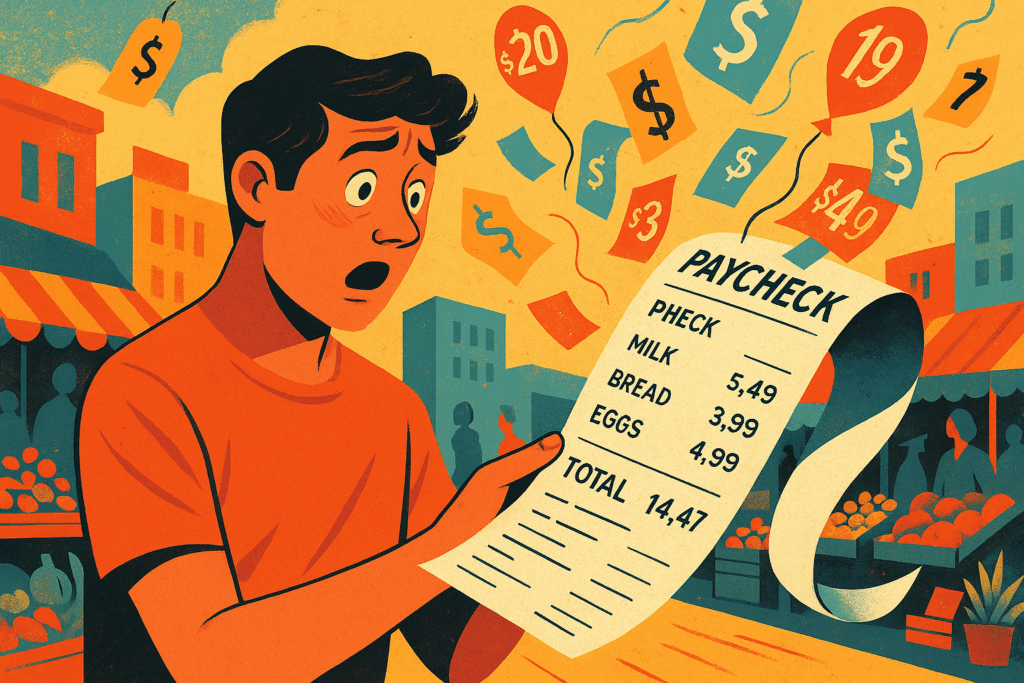It’s easy to celebrate a higher minimum wage. On paper, it sounds like a triumph for low-income workers and a progressive step toward economic equity. Governments often announce such increases with optimism, presenting them as a direct improvement in people’s quality of life. But the reality isn’t always that straightforward. As wages increase, so do expectations — and prices. For many, what looks like a pay raise quickly becomes a struggle to stay afloat in an inflating economy. The link between minimum wage hikes and real purchasing power is far more complicated than it appears.
This complexity lies in the delicate balance between wage growth and market reactions. When the minimum wage goes up, it sets off a chain reaction. Businesses adjust their pricing structures to accommodate higher payroll expenses. Suppliers reevaluate costs. Consumers feel hopeful at first — until they realize their boosted income is being eaten up by more expensive groceries, rent, and transportation. So, does a higher minimum wage really improve people’s financial standing, or does it just reshuffle the burden in more subtle ways?
The illusion of progress: why purchasing power lags behind

Minimum wage increases are designed to help workers catch up with the rising cost of living, but in reality, they often arrive too late. Inflation outpaces wage growth in many countries, diminishing the value of each dollar before it reaches the worker’s pocket. By the time a wage hike is implemented, essentials such as food, housing, fuel, and healthcare have already surged in price. This means that even with a higher paycheck, workers are frequently unable to afford more than they could before. It becomes a race between wages and prices — and prices tend to win.
Moreover, the anticipation of a wage hike can trigger inflation prematurely. Businesses prepare for higher labor costs by raising prices in advance, which can cause the cost of living to spike before workers even see their first bigger paycheck. Once the increase kicks in, the real value of that extra money is already diluted. Purchasing power, the real measure of economic well-being, doesn’t improve significantly — and in some cases, it declines. This creates a frustrating paradox: workers are making more but feeling poorer.
One striking example of this can be observed in sectors with fixed margins, like retail and food service. These industries rely heavily on minimum wage labor and are especially sensitive to payroll changes. When costs rise, they have little choice but to pass those expenses on to consumers, usually through higher prices. This erodes the potential gains for wage earners, many of whom also rely on those same services. Thus, the wage increase becomes a revolving door — money comes in, but it exits just as fast.
Unintended consequences for small businesses and employment
While large corporations may absorb wage hikes with relatively minor adjustments, small businesses often face existential threats. Unlike their larger counterparts, they operate with tighter profit margins and less room to maneuver. When forced to pay higher wages, many must choose between raising prices, reducing staff, shortening hours, or, in the worst cases, closing down altogether. These decisions ripple through communities, especially in areas where local shops and services are the backbone of economic activity.
Employment dynamics also shift. Employers who once hired generously may become more selective. Entry-level jobs could disappear or be automated as a cost-saving measure. In theory, a higher minimum wage should increase worker satisfaction and reduce turnover, but if businesses can’t afford to maintain staff, those benefits vanish. Additionally, some employers might cut non-wage benefits, like paid breaks or staff meals, to offset wage increases — meaning workers get more money per hour but lose valuable support in other forms.
Youth employment is another area where these effects are pronounced. Teenagers and young adults often occupy low-wage, part-time roles as a first step into the job market. If wages rise too quickly, these opportunities become scarcer, reducing their ability to gain experience. Over time, this can increase inequality by limiting access to the early career stepping stones that many workers rely on to build upward mobility. Ironically, a well-intentioned policy aimed at equity can inadvertently make it harder for some to even get a foot in the door.
How to make wage increases truly work for workers
To ensure that minimum wage increases actually benefit workers, broader systemic changes are required. First and foremost, policymakers must anchor wage decisions in real-time data about inflation, cost of living, and regional economic conditions. A static, nationwide increase may help some, but leave others behind, especially in countries with vast disparities between urban and rural areas. Tying wages to a reliable cost-of-living index and adjusting them automatically can provide more responsive protection without sudden economic shocks.
Supporting measures must also accompany wage hikes to maximize their positive effects. Affordable housing initiatives, expanded public transit, accessible healthcare, and food subsidies can amplify the impact of wage increases by reducing essential expenses. Instead of workers using their raises to chase inflated costs, they can actually gain ground and improve their quality of life. It’s not just about earning more; it’s about spending less on necessities and having something left to save or invest.
In addition, targeted support for small businesses can soften the transition. Tax credits, payroll subsidies, or phased-in wage increases can prevent closures and layoffs while still honoring the goal of fair compensation. For example, governments could offer temporary wage support to mom-and-pop stores or restaurants adjusting to new labor costs. This prevents wage hikes from becoming a death sentence for local economies and keeps employment stable.
Education also plays a role. Equipping workers with financial literacy and upskilling opportunities ensures that minimum wage jobs are not career dead-ends. Workers who understand how to manage their finances — and who have the tools to advance their careers — are better positioned to escape the cycle of living paycheck to paycheck. Wage increases should be part of a broader ladder of opportunity, not the top rung.
Beyond the paycheck: building real financial resilience
In theory, raising the minimum wage is a straightforward solution to economic hardship — but in practice, it’s a delicate operation with far-reaching consequences. While a bigger paycheck can bring temporary relief, it doesn’t guarantee long-term stability unless it’s part of a holistic strategy. The real goal should be sustainable prosperity, not symbolic gains. If done thoughtfully, minimum wage policies can empower workers without destabilizing the economy. But when treated as a silver bullet, they risk becoming just another headline with little real impact. For meaningful change, we must look beyond the wage itself and build a system where earnings translate into lasting economic power.


